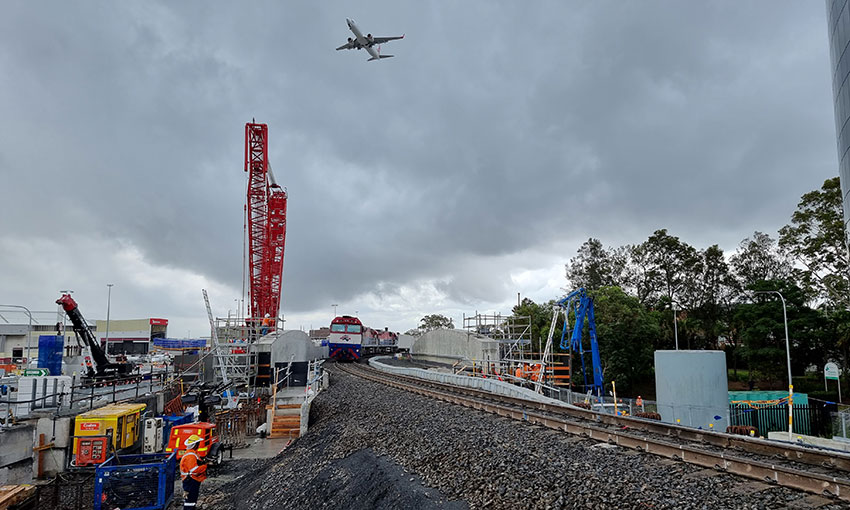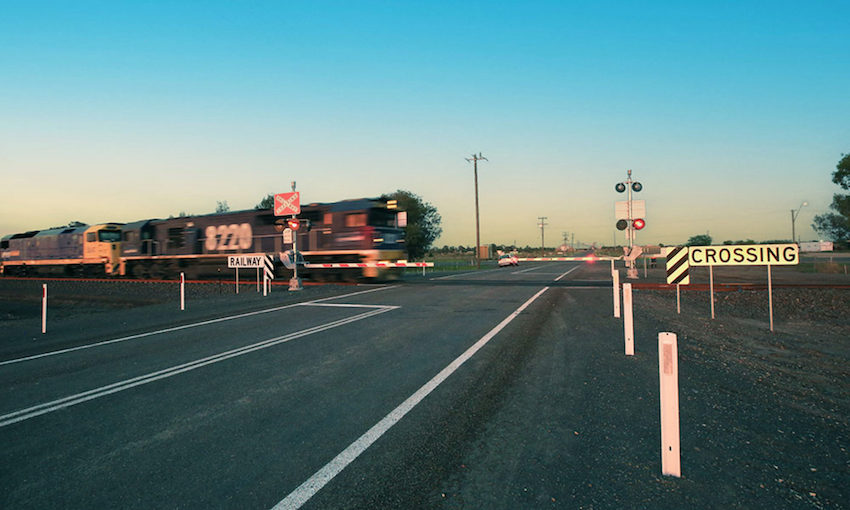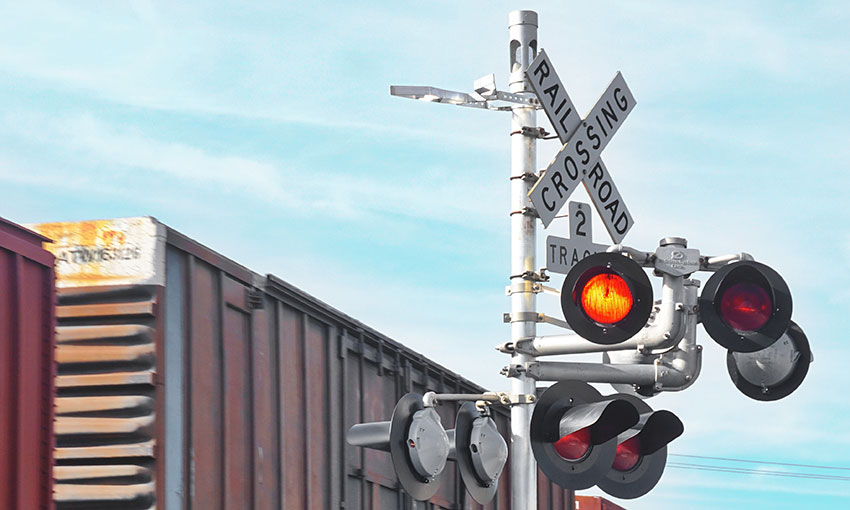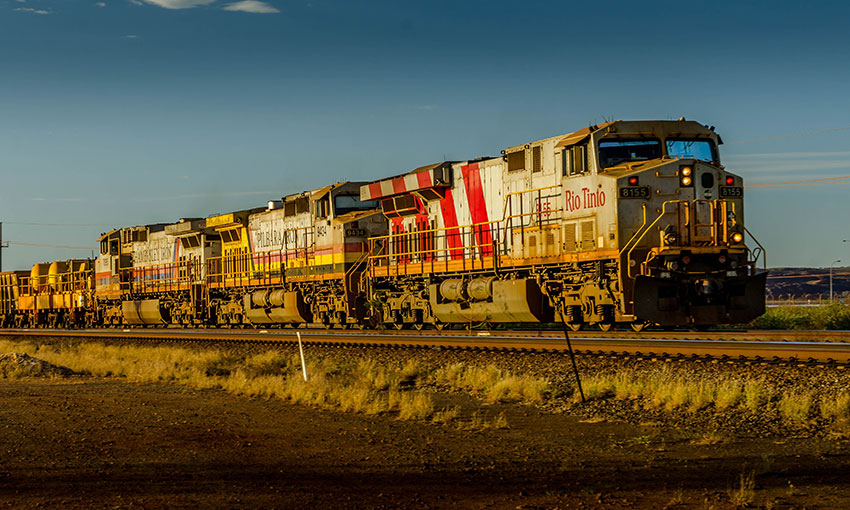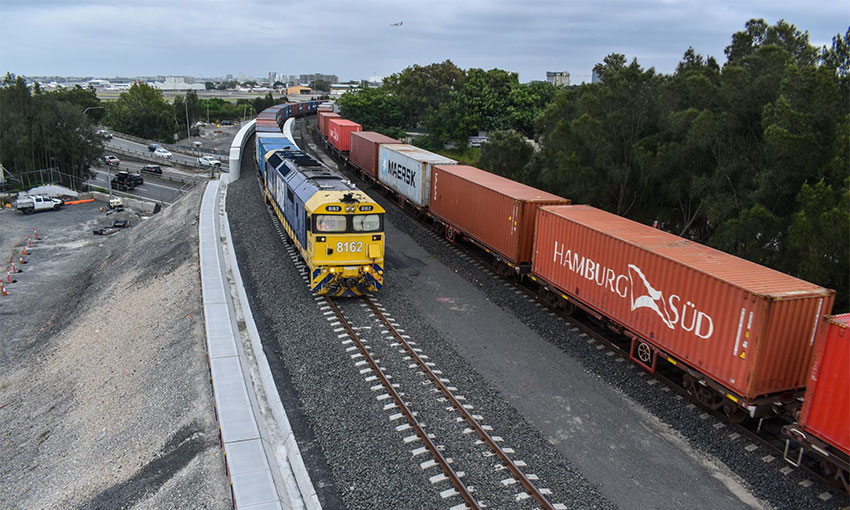THE AUSTRALIAN Rail Track Corporation dismantled a steel single-track rail bridge and built a new, concrete, double-track bridge over a period of five days.
The bridge is located on Robey Street in Mascot, Sydney. A statement from the Australian government said this is a “constrained and high-traffic” area.
The government is fully funding ARTC to deliver the $400-million project. It is intended to provide better access to Port Botany, improve freight supply chains across New South Wales and help reduce the number of trucks on local roads.
The bridge works included moving and installing two 36.5-metre-long main bridge girders over Robey Street. Each girder weighs 330 tonnes.
Workers also installed 24 planks to form the bridge deck. They used a 600-tonne crawler crane and a 650-tonne mobile crane, working simultaneously.
The project will duplicate the remaining 2.9-kilometre section of single line track to Port Botany and build a passing loop on the Southern Sydney Freight Line at Cabramatta to accommodate freight trains up to 1300 metres in length.
Minister for infrastructure, transport, regional development and local government Catherine King said Port Botany is a major gateway for Australia and the world and investing in its growth is vital to the economic wellbeing of the nation.
“When completed, this project will allow freight to be moved more efficiently and effectively, ensuring we are ready for an anticipated 77% increase in freight task by 2036,” she said.
ARTC group executive major construction projects Mike Zambelli said the Botany Rail Duplication is a transformational project.
“The Robey Street bridge construction indicates major construction works are on track with the project expected to be complete in 2024,” he said.
“Completing the Robey Street bridge works in just five days in a busy urban environment is a major achievement.”
Mr Zambelli said each extra freight train travelling on the Port Botany Rail Line would take up to 54 trucks off roads.
“Not only will this project increase freight capacity, it will also encourage more freight movements to be made by rail – helping to shift freight away from road transport and reduce truck movements and associated traffic congestion,” he said.

